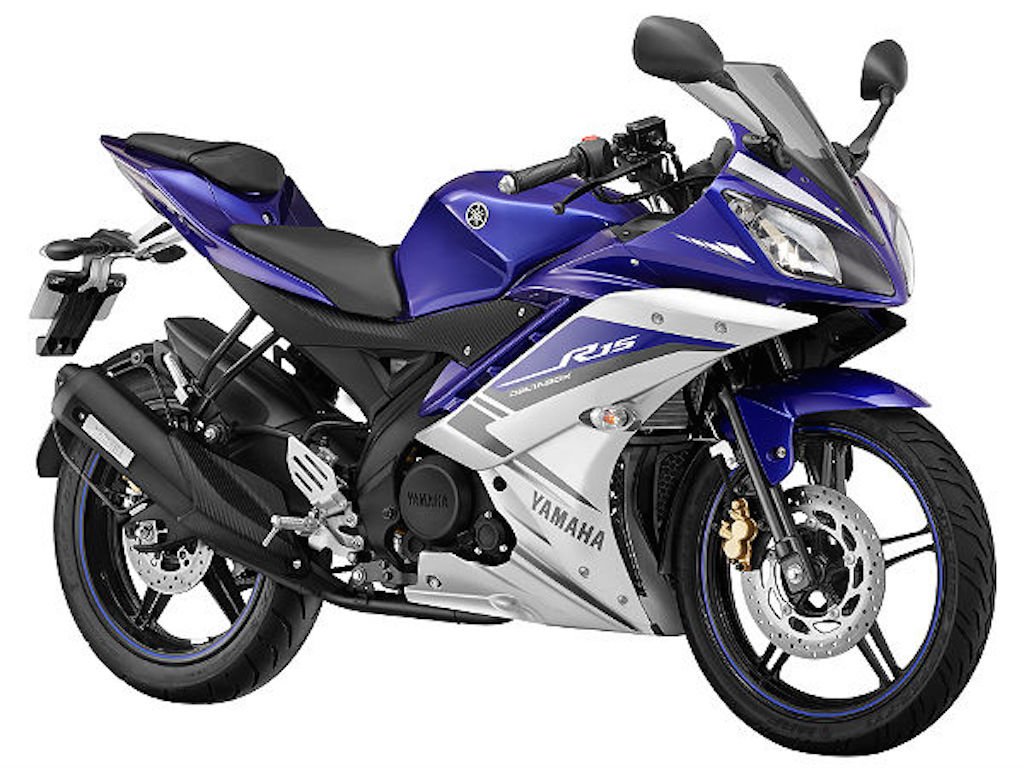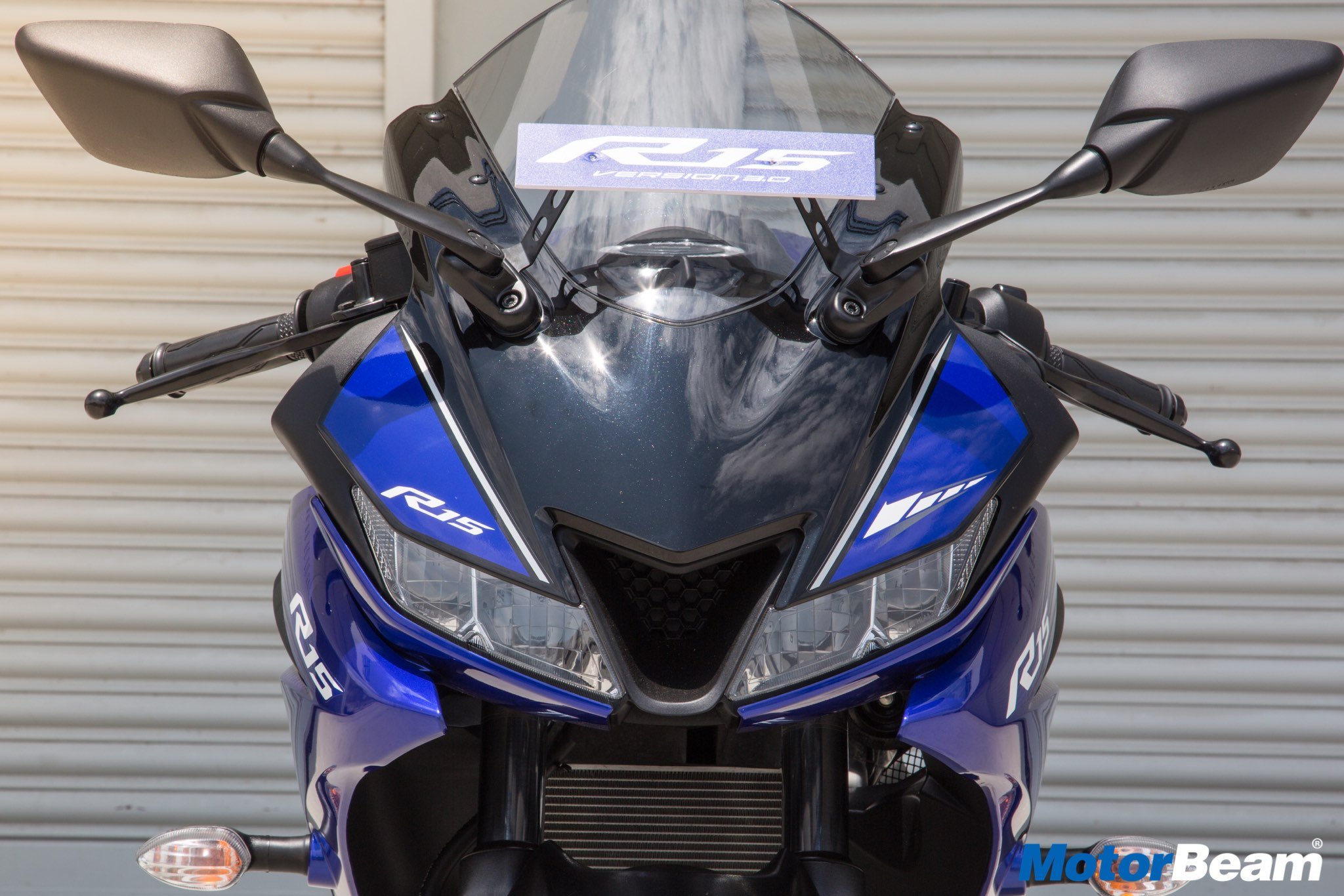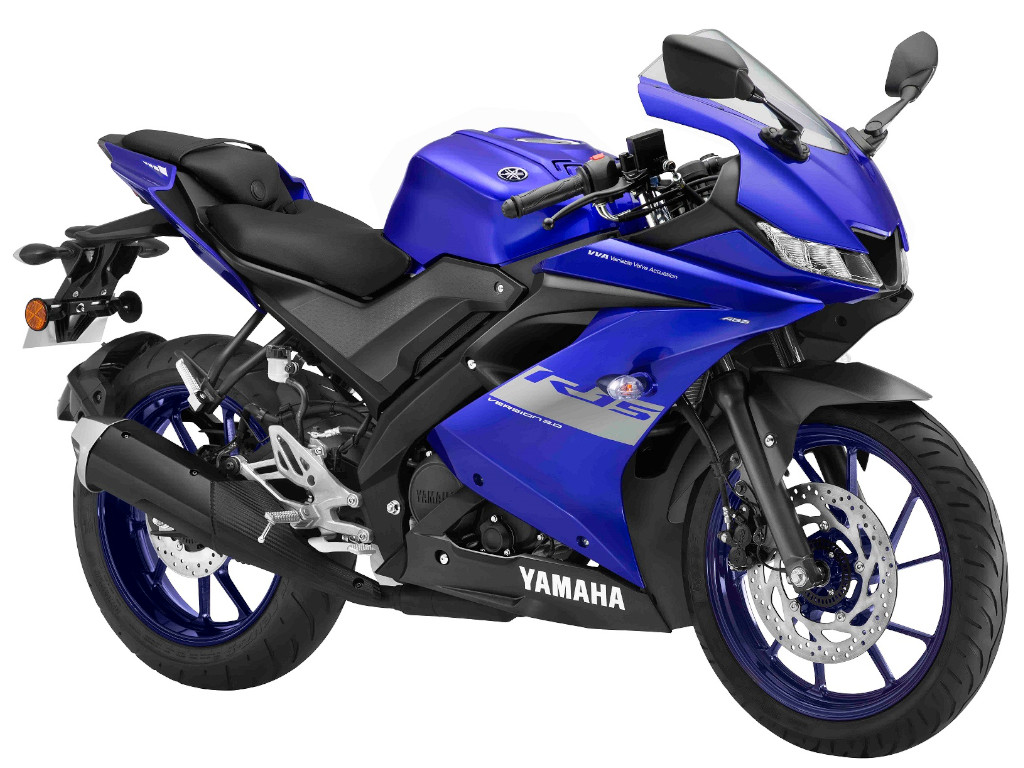Though the R15 V3 weighs 3 kgs more than the V2, the former feels more agile and nimble
Performance – The R15 V3 comes powered by a new 155cc single-cylinder, liquid-cooled and fuel-injected motor that produces 19.3 PS (up by 2.3 PS) of power at a screaming 10,000 RPM and 15 Nm of torque at 8500 RPM. The powertrain gains the VVA (Variable Valves Actuation) technology and comes mated to the same 6-speed gearbox like before but this time around Yamaha has given an Assist and Slipper clutch for the V3 and it works wonderfully. The slipper clutch reduces the weight of the clutch pull thereby providing low-stress shifting during deceleration. The R15 for the first time features the VVA tech. The system serves torque for ease of use at early RPMs. Basically, there are two intake valve cams, one for the low-mid range RPMs and another for the higher RPMs. At the 7400 RPM mark, they switch between each other to ensure accurate power and torque are present throughout the rev range.
The motorcycle gets a 48-teeth rear sprocket as opposed to 47-teeth in the V2, helps in faster acceleration
The gearbox is super slick and the exhaust sounds very throaty at higher RPMs. While on lower RPMs, the exhaust sound is identical to the R15 V2’s. Every component of the powerplant is well-built. During and after our ride on the new R15 on the track, we didn’t really notice a difference in the way the R15 V2 and R15 V3 rode. Probably driving both the versions back to back on our roads will let us know the difference, so we will reserve our judgement till we do just that.
If you decide to buy the R15 V3 after reading this review, make sure you get better stickier rubber
Riding Dynamics – The R15 V2 was itself an aggressive machine and the V3 takes that to a notch above. Though you lean towards the front to reach the handlebar, the comfortable and well-cushioned seat ensures that the ride is comfortable irrespective of whether you are on the track or on the roads. Maximum weight is still concentrated at the front and this R15 V3 is a confidence-inspiring and a corner-carving machine. The R15 V3 gets slightly fatter front telescopic forks and a monoshock at the rear. The suspension setup is similar to the R15 V2 and there isn’t much difference between the older and the newer versions.
The R15 V3 gets wider front and rear tyres
The R15 retains its rider-friendly nature in this generation as well
Coming to the handling department, this is where the R15 V3 truly shines. The motorcycle dives into corners effortlessly holding the line no matter what and moreover, it doesn’t intimidate you on the track. The 100 section (MRF) front and the 140 section (Metzeler) rubber at the rear grip the road well but the front MRF rubber was losing grip under hard braking and as a result was making the screeching noise. Better tyres can do wonders on this 150cc supersport machine. The motorcycle gets a bigger front disc (282 mm) and a 220 mm rear disc for braking duties. While the brakes themselves do a good job of shedding speeds, the lack of ABS is what will make prospective buyers probably look at a different option. Yamaha should have at least offered ABS as an option.




